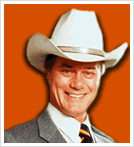
"I do not believe that there is an essential difference between the shape of Lachenmann's piece and that of a Beethoven sonata. The means composers use have changed, but the material they work with and the musical expression they try to create have remained the same. Beethoven shaped his story into a sonata and Lachenmann tells a story about colour that ends in one note. In both cases, the result is music; it still concerns emotion and the building or lessening of tension. That is a classical theme and although you can vary its development endlessly, there is no essential change.
Of course, a new dimension is added in contemporary music through the extension of the technical possibilities and the increased importance of colouristic effects. But colour is also important in the music of Bach or Beethoven; they only use it on a different scale. If in just one note in a suite by Bach I deviate a little from the way it is usually played, everybody in the audience notices. This is far less the case in a contemporary piece, simply because the audience has never heard the piece. But when I create a sort of white noise in Pression (Lachenmann's piece on this CD), or if I put an extreme pressure on the bridge of my instrument, this results in a range of colour differences that is just as wide as in Bach's or Beethoven's music; only the resulting colours are different from theirs.
For some time after the Second World War, composers and musicians have denied the relationship between classical and contemporary music. But at present that bond is definitely being affirmed again. That is appealing to me. Therefore, all the works on this CD have something to do with the classical tradition of playing the cello".Taco Kooistra, CD liner notes
1. Capriccio per Siegfried Palm - Krzysztof Penderecki, 1968
2. Just for One - Joep Straesser, 1981
3. Sacher Variation - Witold Lutoslawsky, 1975
4. Hapsis - Herni Kergomard, 1986
5. Pression - Helmut Lachenmann, 1968
6.
Spektra für 3 Celli - Unsuk Chin, 1985
7. Solipse - Rolf Gehlhaar, 1973
Taco Kooistra - Cello#6 with
Viola de Hoog & E. van Regteren Altena.
#4 & #7 with tape.
Recorded & Edited in Veenendaal, 1992
Released by Attacca in 1993
link@320









